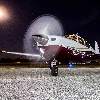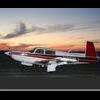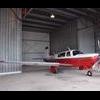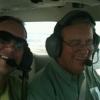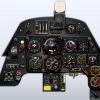Leaderboard
Popular Content
Showing content with the highest reputation on 04/19/2013 in all areas
-
Ethanol doesn't boost octane does it? I thought it just boosted the corn lobby's income! Terrible idea in any case to put foodstock into fuel and distort the food markets while simultaneously screwing up engines across many industries.3 points
-
I admit to not having a large amount of experience appearing before administrative law judges, but from the experience I have had, I have concluded that for the most part, they are rubber stamps for whatever administrative agency is bringing the action. The ones I have appeared before have taken the position that "the agency has nothing to gain by bringing this action" and is therefore credible. On the other hand, the respondent has a vested interest in not having the court rule against him, and is therefore biased and not credible. Then when an appeal is taken, the next court takes the findings of the administrative judge regarding credibility as true (since they were sitting there listening and watching the witnesses). This puts a terrible burden on those of us running afoul of agency regulations. I am well aware that cops don't generally go out of their way to arrest innocent people, and most often they defendant actually committed a crime. But when he goes to court, he gets the "presumption of innocence" and has at least a fair chance. Not so for pilots. What we probably need to take away from this is that "being right" doesn't mean you will win, and it makes a lot of sense to avoid antagonizing the FAA. Discretion being the better part of valor, and all that stuff. Rant off; sorry about that.2 points
-
Their whole argument against the pilot was that the aircraft "might not be in airworthy condition or conform to its Type Design". Turns out it was. However, the pilot in command is the person who returns the aircraft to service and is responsible for airworthiness, the complete definition is the two terms above. The pilot inspected the airplane for 30 minutes and noticed no defects, then flew. He should have had a better lawyer. I knew a guy who got ramp checked while flying a Cessna 210. They gave him some crap about cracks eminating from the plastic wingtip which were stop drilled. They argued that the airplane was unairworthy because the cracks may propagate under the paint beyond the stop drills, which is a weak argument, and they tagged it. Well, he was an A&P. First thing he did was walk over to their rented Bonanza and find a couple smoking rivets, and pointed out their machine was unairworthy. Satisfied they were grounded, he filled out the card "Inspected wingtip, no defects noted, aircraft returned to service", handed it back to them, and took off, left them sitting in Topeka with their Bonanza. He never had trouble from those guys again. Can't wait to get my A&P, and run across an inspector in that situation.2 points
-
Well, I have to disagree that speed is the issue. Ground speed maybe, but airspeed no. I can land my 231 at 90 in gusty crosswinds. There are typically two things that cause a bounce, and I will add a controversial third. First, the pilot fails to ease the nose up on landing and the plane hits flat or nose first. That guarantees a bounce and a porpoise. Second, and maybe a bigger factor with the later models with heavier engines, is the the pilot's failure to hold the nose back at the moment of touchdown. The common reaction is to let the yoke move forward at the moment of touchdown. That creates a bounce in which the mains hit first, and then the nose levers down and hits, and if hard enough you are in the air again and porpoising. You need to land on the mains only. If you land on the mains only, it is possible to have a small bounce, but it will always settle down quickly rather than porpoising, and it is the porpoising that creates prop strikes. If anything, I add a little extra back pressure at that moment when the mains touch to be sure the nose wheel stays off the ground. The third and controversial cause of bounces is the POH and flawed teaching. Unless you are doing a calm wind landing or a short field landing, there is no good reason to do as we are taught and use full flaps. In my aircraft, it makes the plane way too light on its feet and any excuse to go back in the air and it will do just that. I land with takeoff (half) flaps most of the time, in calm or short field conditions with full flaps, and in gusty crosswind conditions no flaps. Traditionalists go ahead and rag on me all you want, it is the way to land my aircraft. My perspective is perhaps part of the reason for my feelings on this. I live in the midwest where we are nearly always landing in gusty crosswind or headwind conditions. Calm or steady wind landings are not the norm. I would say 10% of the time I land no flaps in strong winds, 10% full flaps for a short field or calm winds, and the other 80% takeoff flaps and 85 knots short final, with the airspeed decaying to about 75 at the numbers. It is possible to save a bounced landing. Add a small amount of power and keep the nose up, then let the aircraft settle back down on the mains only. It should go without saying that you need to insure that you have sufficient runway to do this, but a Mooney when handled properly will land in a surprisingly small length. So my diagnosis is that you are landing too flat, either on the nose or on three wheels. It is odd, but I think everyone goes through spates where they just are not seeing the landing properly. Make a little more effort to raise the nose when you are within a few feet of the runway, and if it bounces a little on the mains but you have kept the nose off the ground all will be good.2 points
-
I must agree. My attitude should not affect the airworthiness of my airplane. And since when, as PIC, can I not make the final call to the airworthiness of my plane? Aren't I required by the FARs to do so for every flight? This guy apparently behaved poorly, but does bad manners create an airworthiness issue? How about the chips in your leading edges from bug impacts or flying through rain? Do they make the airplane not airworthy, or as in this case, in a state of unknown airworthiness because each chip has not been inspected by an A&P/IA? Had he been less confrontational, would the "unknown airworthiness" of his plane been acceptable? Looks to me like he upset people, and they were out to get him a ny way they could. Taxiing on a taxiway, towards an active runway, with tower taxi clearance and an IFR flight plan filed, and the FAA is uncertain if he was operating his aircraft on the airport for the purposes of air navigation? Really? What does it take to "prove" that you are in a movement area for the purpose of air navigation? A bad case of FAA and Judge Advocate overreaching . . . . I understand their desire to punish the reported bad manners, but to do so like this means that all of us could face similar charges on every flight. What happens when I taxi for a VFR departure from an untowered field? Am I operating on the airport for the purpose of air navigation? Or if something happens, should I not have been operating my airplane there at all??? And is the jet hanging out beyond the line acceptable? In [vehicle] traffic court, there would be some shared responsibility for blocking the taxiway, but in this case it was all hung on the man following the approved yellow line and none on the person hanging into the traffic right-of-way.1 point
-
I've had the pleasure of a total electrical failure on a VOR approach [under the hood with CFII] just below the clouds. The gear was most of the way down, only took 6 or 8 cranks for it to stop. Dropped gear, hit landing light button--darkness . . . At any rate, I wait to lower the gear until after the flaps are at Takeoff; drop flaps at 115-120, retrim and hold gear up until ready to start descent, VFR or IFR. Raising the gear is quick--by my Owner's Manual, "when safely airborne and in good control." This is usually below treetop level, as I accelerate through Vx. Low airspeed = low gear motor stress =?=> long worm gear life1 point
-
Of course there are multiple views of any given situation (well probed in the Japanese movie Rashomon), and I am not so naive as to take the AOPA article at face value, but I am terribly concerned that both the FAA and NTSB have taken the position that the Administrative Law Judge could "stretch" the non-airworthiness for an aircraft to include a paint scratch, and then deem the aircraft as unairworthy because "he took off with an unknown condition". Sorry, but I see this is a "gotcha", and we should not have to have this sort of vindictiveness from the FAA and NTSB. The pilot may well have acted poorly in that circumstance, and I like to think I would have been less confrontational (but still wary), but how do you fight against "unknown conditions"?. Not being a perfect pilot, just human, I think it is hard enough to make any lengthy flight without some suspicion that I might have inadvertently broken some FAR - nothing overt, of course, and I would hate to have that Administrative Law judge, or another like him, decide what, if anything, I did wrong. Yesterday, I cleaned out some old files, and found about a dozen or more old NASA Safety Reporting forms I had filed over the thirty years or so I have been a FAA certificated pilot, (never had a license in my military days). None of them were ever invoked, but I think the NASA reports are a great safety net, and I encourage their use.1 point
-
Well, a couple of thoughts. First, it is not correct that cops generally don't go out of their way to arrest innocent people. There are cops who do, and there are many more cops who, when they get on the witness stand, don't remember anything about the event that lead to a citation or arrest, but they have been prepared by the prosecutor and they know the script, they say what they are supposed to say not what actually happened. Those "cops" who do these things, are relying on being able to hide in among the honest cops and therefore be believed. Second, one cannot assume that the facts as stated in an Ad Law Judge's opinion, are the actual facts, or even what the evidence was. Most Judges are analytical about the facts, they state what was presented by both sides and apply the law. It is the Judge who writes the opinion, and if a Judge wants to "cook" a case or justify a particular result, then don't expect all of the facts to be laid out accurately. Like the "cop" who hides among honest cops, this type of Judge hides among honest judges, expecting to be believed because everyone thinks Judges are honest. We do not know "the rest of the story" here, what is in the opinion may be accurate or it may not. Third, the issue here is not whether the pilot deserved some kind of punishment, it is whether the FAA and its Ad Law Judges has any jurisdiction over what appears to have been a parking lot accident with at most minor damage. If there is a reg. that covers it, fine. Making the regs. cover it just because the Ad Law Judge thought he should do something, is not fine. Fourth, it is certainly a concern that the case goes back to the Ad Law Judge who screwed it up in the first place. However, in this instance, what the NTSB is saying, is that there must have been an actual airworthiness issue with the aircraft. The Ad Law Judge went to the lengths he did to stretch the law for the exact reason that he could not find an airworthiness issue. Having tried and failed once, I don't think there is much concern he will find one the second time around. A paint scratch is not an airworthiness issue. Last, and by far the most important point about this decision, is whether the law interpreting the regulations really ought to be that a pilot is reckless and careless if he knew or should have known that there might be an airworthiness issue with the aircraft. "Might be"? There always, every single time you fly, "might be" an airworthiness issue. This Judge stretched the law far beyond its bounds. And the other important point that follows from that is whether the jurisdiction of the FAA should be boundless, to find a way to violate a pilot any time they wish, or whether it should fall within the bounds of some rational set of laws that the FAA and government is bound to follow. I don't want anyone to think that I have an agenda when it comes to the FAA, in fact just the opposite, but this was a bad decision by a very overreaching Judge, which we do not need.1 point
-
Break-in procedures are specific to type/model/shop etc and I suggest you get detailed instructions. I hung a GM LS1 on my Lancair IVP and the break-in was quite a bit different than the TSIO 360 rebuild and top on my 231. My comments about test flights is to make sure we understand the risks and follow a well established test flight process. EAA has distilled the process from the airforce, NASA, commercial manufacturers, etc. Overhauled/Rebuilt/New engines will either be fine or DOA, I am certain the Zephyr engine will be well tested at the facility and most shipping damage should be readily visible. The real variable is in the re-installation and a lot of things can and do go wrong. I had an engine fire in my 231 after an annual because my mechanic forgot to tighten the fuel rail to the injectors. They were finger tightened and one came loose on the second leg of MGY-LIT-CRP. These things never happen in ideal conditions and I was IMC at 3000 ft when my engine caught fire with a big bang. Luckily I was able to shutoff the fuel and manage a dead-stick landing back at LIT but it was due to a simple mistake. Please incorporate the specific break-in instructions into a documented test flight plan and have someone knowledgeable review it. Follow your plan............ Don't go and wing it .1 point
-
Yes but try that switch when you have lost all electrical power. But hey I'm partial to the manual gear. They are all good until you have problems1 point
-
Talked to Sporty's about a trade up program for the original stratus to stratus 2, no plans right now. They did say however, that a software upgrade to the original stratus is about to be released that adds traffic1 point
-
Getting so excited about Oceano Airport Celebration. All are welcome! Come dance to the San Luis Jazz Band on May 10th, 5:30 p.m. $10. Celebration Day is May 11th. We are collecting items for military care packages. Everyone come on!1 point
-
Looks to be a volume adjustment on the side of the case.... I googled intervox intercom pinout and found the install PDF http://www.aem-corp.com/manuals/install_ops_AEM/AA80-IO08-5.00.pdf1 point
-
1 point
-
The best flight planner for me is www.fltplan.com . It has something that I have not found in any of the others, and that is the ability to build a profile for a specific aircraft. When I am going to the flight levels the climb time will be fairly long, over a half hour and maybe as long as 45 minutes from a near-sea level airport. I don't get accurate flight times from either Foreflight (which lets you put in one speed for the aircraft) or the AOPA product. www.fltplan.com factors in the winds aloft at every level, so the flight plan generally comes out as accurate within five minutes or so. I will use the FF altitude picking feature during the planning process though, because it is alot handier than the way www.fltplan does it. Probably different for normally aspirated flight where the climb is not as long.1 point
-
If you can not land with full flaps without bouncing hard...this is an excuse to practice. Not good people, not good. Don't sell partial and or no flap landings as what to do...been there done that. Master your birds...1 point
-
I've transitioned several guys to my C model, though I don't pretend to be a Mooney guru. What I've found helps after they have the basics of proper airspeed control are: 1. Begin by using less than full flaps. 2. Make sure they've got enough back trim on final....usually a tad more than the "takeoff" trim. 3. Make sure they get a chirp (or two...) out of the stall warning horn prior to settling onto the runway. 4. Make sure they keep plenty of back pressure on the elevator during roll-out. 5. Don't do touch and goes. #3 and 4 may have to be modified a bit if it's gusty/windy.1 point
-
1 point
-
1 point

